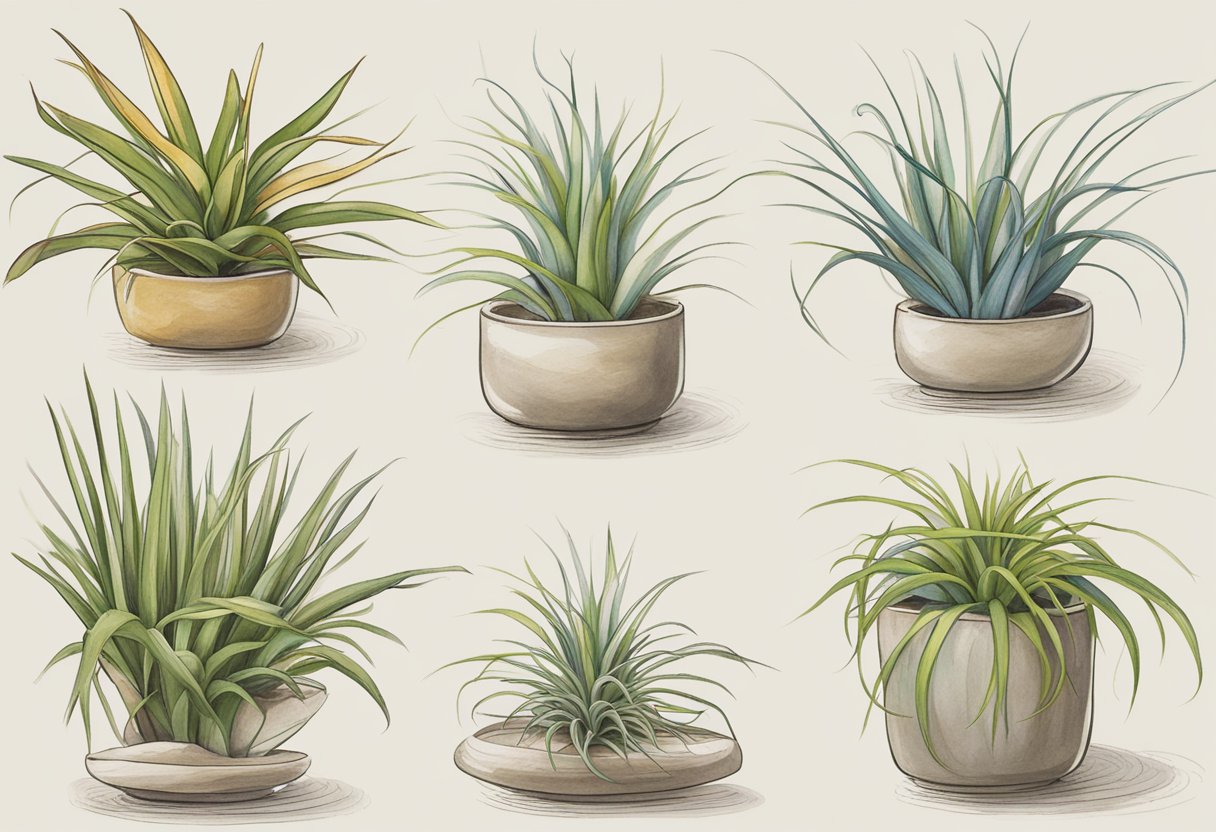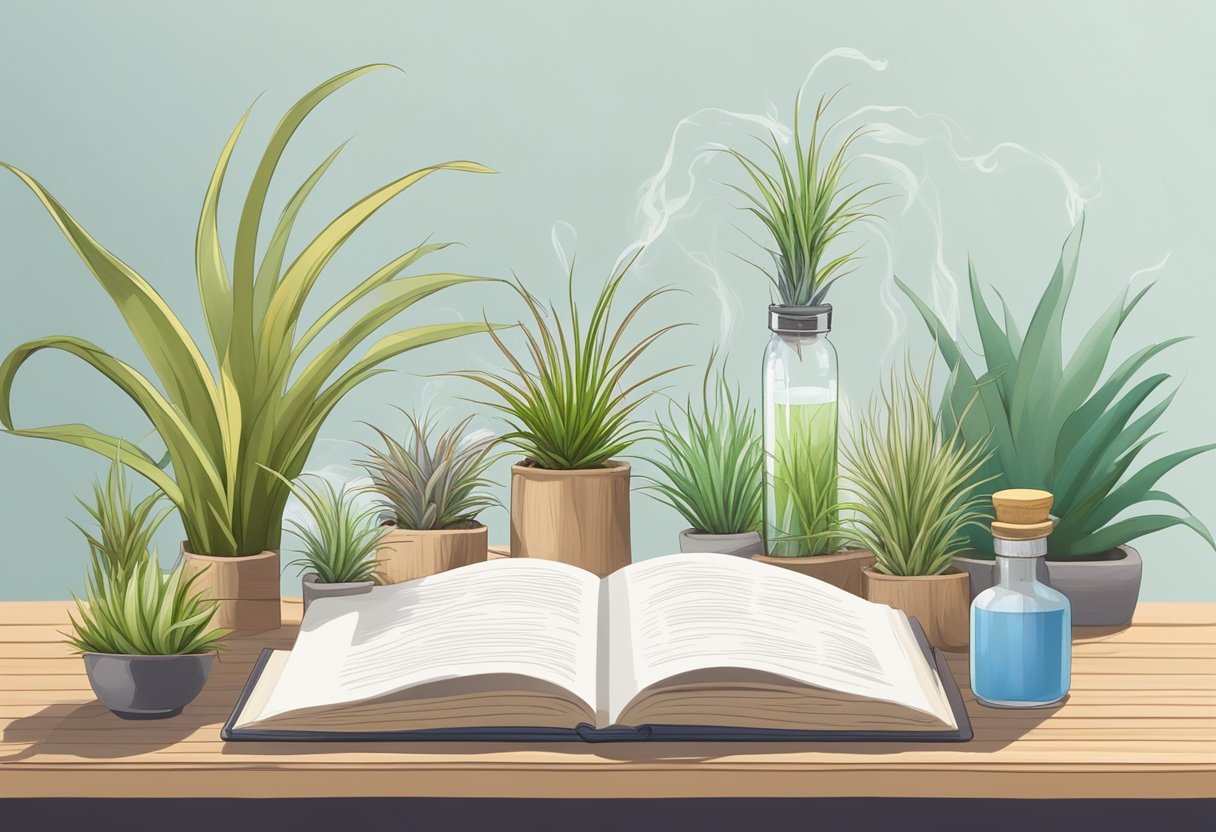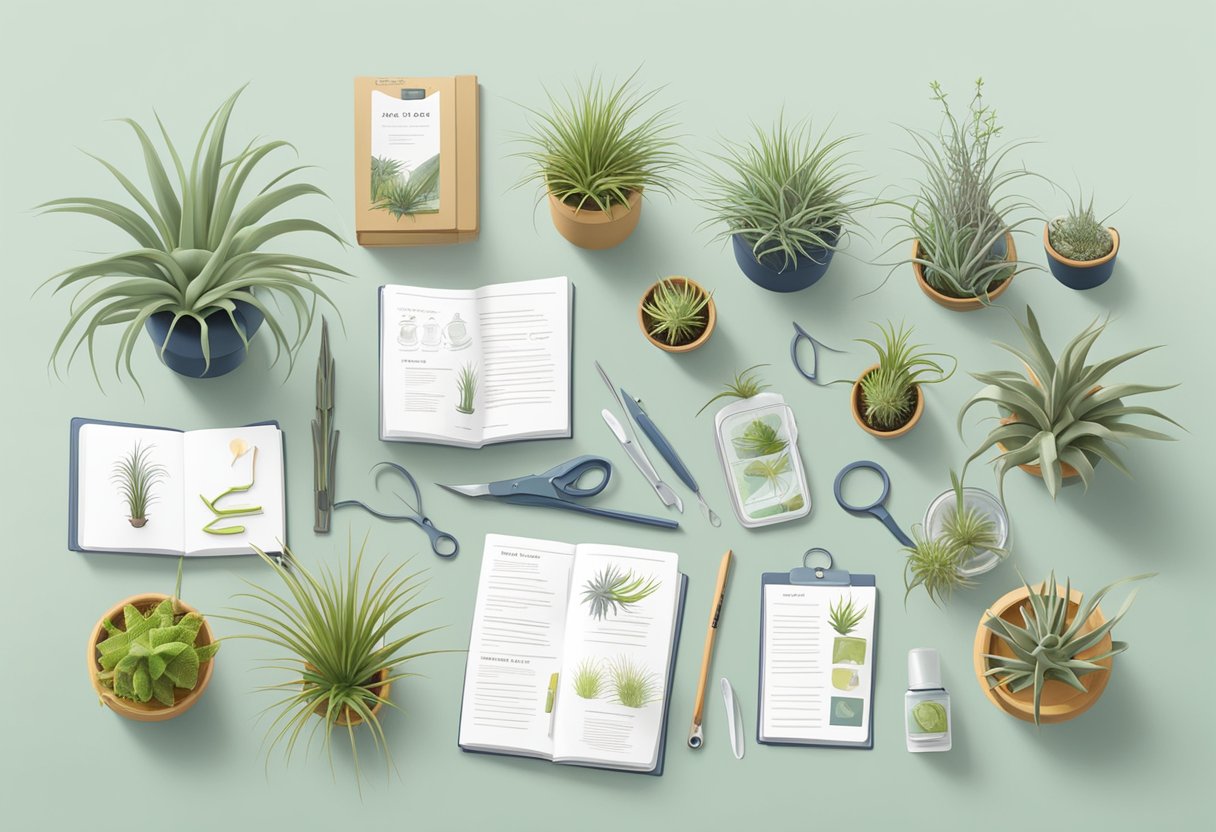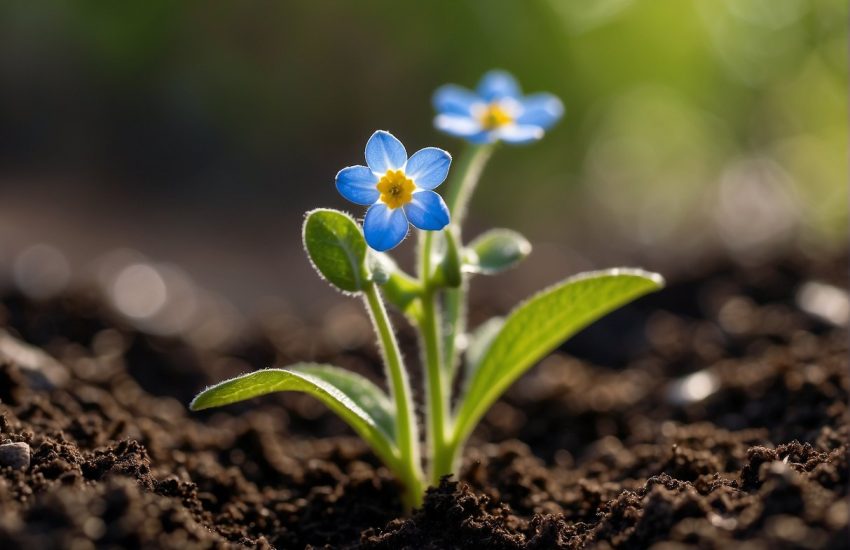How to Care for Air Plants: A Comprehensive Guide
Air plants, also known as Tillandsia, are becoming increasingly popular as houseplants due to their unique appearance and low maintenance requirements. These plants are native to the Americas and can be found growing in a variety of environments, from deserts to rainforests. Unlike other plants, air plants do not require soil to grow, making them a great option for those who want to add greenery to their home without the hassle of traditional gardening.

Caring for air plants is relatively simple, but there are a few things to keep in mind to ensure that they thrive. One of the most important factors to consider is their watering needs. Air plants absorb moisture through their leaves, so it’s important to mist them regularly or soak them in water for a few hours every week. It’s also important to provide them with bright, indirect sunlight and good air circulation to prevent them from rotting or drying out.
In this article, we will provide you with all the information you need to care for your air plants and help them thrive in your home. From watering and lighting requirements to fertilization and propagation, we’ll cover everything you need to know to keep your Tillandsia healthy and happy. Whether you’re a seasoned plant parent or a beginner, this guide will help you care for your air plants with confidence and ease.
Understanding Air Plants
Air plants, also known as epiphytes, are a unique group of plants that do not require soil to grow. Instead, they absorb moisture and nutrients from the air through their leaves. This makes them an excellent choice for those who want to add greenery to their homes without the hassle of traditional potted plants.
Species and Varieties
There are over 650 species of air plants, belonging to the genus Tillandsia. Each species has its own unique characteristics, such as size, shape, and color. Some of the most popular species include Tillandsia ionantha, Tillandsia xerographica, and Tillandsia tectorum.
In addition to the different species, there are also various varieties of air plants. These varieties can have different leaf shapes, colors, and textures. It’s important to choose the right variety for your specific needs and preferences.
Natural Habitat and Adaptations
Air plants are native to the Americas, from the southern United States to Argentina. They are commonly found growing on trees, rocks, and other surfaces in tropical and subtropical regions.
To adapt to their epiphytic lifestyle, air plants have developed specialized structures called trichomes. These trichomes are tiny, hair-like structures that cover the leaves and help the plant absorb moisture from the air.
Air plants also have unique adaptations to their climate. They can tolerate a wide range of temperatures, but prefer warm and humid environments. They are also adapted to receive moisture from the air, rather than from the soil.
Overall, understanding the natural habitat and adaptations of air plants is crucial to properly caring for them. By choosing the right species and variety, and providing the appropriate climate and moisture, you can enjoy the beauty of these unique plants in your home.
Essential Care Guidelines

Light Requirements
Air plants need bright, indirect light to thrive. Direct sunlight can scorch their leaves, so it’s best to place them in a location with bright, filtered light. If you’re not sure if the light is too bright, look for signs of stress such as brown or yellow leaves.
Watering Techniques
Air plants get their moisture from the air, so they don’t need to be watered like traditional plants. Instead, mist them with water once or twice a week, or dunk them in water for 10-20 minutes every two weeks. If you live in a drier climate, you may need to mist them more often or soak them for longer periods of time.
Temperature and Humidity
Air plants prefer temperatures between 50-90°F and high humidity. In the summer, they can be kept outside in a shady area. In the winter, they should be kept indoors in a room with a humidifier or in a bathroom where they can absorb moisture from the shower. If the air in your home is dry, you can also place a tray of water near the plants to increase humidity.
Remember to monitor your air plants regularly and adjust their care as needed. With the right conditions and care, your air plants will thrive and bring beauty to your home or office.
Display and Mounting Options
Air plants are versatile and can be displayed in various ways. Here are some display and mounting options to consider:
Terrariums and Containers
Terrariums and containers are great options for displaying air plants. They provide a contained environment that can be easily customized to fit the aesthetic of any space. Glass containers are a popular choice because they allow for easy viewing of the plant and its roots.
When using a container, it’s important to ensure that it has proper drainage. Air plants should never be left sitting in standing water. A layer of rocks or pebbles at the bottom of the container can help with drainage.
Creative Mounting Ideas
There are many creative ways to mount air plants. Driftwood, tree branches, and bark can all be used as natural mounts. Simply nestle the air plant in a crevice or attach it with wire or glue.
Hanging air plants from the ceiling or placing them in a wall-mounted plant holder can add a unique touch to any space. For a more industrial look, consider using metal pipes or wire mesh to create a mount.
When mounting air plants, it’s important to ensure that they have proper air circulation. Avoid tightly wrapping the plant in wire or string, as this can restrict airflow and cause the plant to rot.
Overall, the display and mounting options for air plants are endless. Whether using a container or getting creative with natural mounts, air plants are sure to bring a touch of green to any space.
Propagation and Growth

Air plants are known for their ability to produce offsets, also known as pups. This process is how air plants naturally propagate and grow in the wild. Producing pups is a sign that your air plant is healthy and growing well.
Producing Offsets (Pups)
To propagate air plants, wait until the pup is about one-third to one-half the size of the mother plant. Then, gently separate the pup from the mother plant by pulling it away from the base. Be careful not to damage the roots of either plant during the separation process.
Once the pup has been separated, it can be placed in a new container with fresh soil or simply attached to a new surface. It’s important to note that air plants do not require soil to grow, so attaching the pup to a new surface is a viable option.
Fertilization and Nutrients
Air plants require nutrients to grow and thrive. Fertilizer can be used to provide these nutrients, but it’s important to use a fertilizer that is specifically designed for air plants. Over-fertilizing can damage the plant, so it’s important to follow the instructions on the fertilizer carefully.
In addition to fertilizer, air plants can also benefit from occasional feeding with a solution of water and fish emulsion. This can provide additional nutrients and help the plant grow strong and healthy.
Overall, air plants are relatively easy to care for and propagate. By following these simple steps for producing offsets and providing proper nutrients, your air plants can thrive and grow for years to come.
Common Issues and Solutions

Dealing with Pests and Diseases
Despite their hardy nature, air plants are still susceptible to pests and diseases. Two of the most common pests that can affect air plants are mealybugs and scale insects. Mealybugs are small, white, cotton-like insects that can be found on the leaves of air plants. Scale insects are small, round insects that can be found on the leaves and stems of air plants.
To get rid of mealybugs and scale insects, mix a solution of equal parts water and rubbing alcohol and spray it directly onto the affected areas. Repeat this process every few days until the pests are gone.
Air plants can also be susceptible to diseases such as root rot and leaf spot. Root rot is caused by overwatering and can be prevented by ensuring that the plant is not sitting in water. Leaf spot is caused by fungal infections and can be prevented by ensuring that the plant has good air circulation.
Preventing Rot and Sunburn
One of the most common issues with air plants is rot, which is caused by overwatering. To prevent rot, it is important to ensure that the plant is not sitting in water and that it is allowed to dry out completely between waterings. If the plant does develop rot, it is important to remove the affected areas immediately to prevent it from spreading.
Another issue that can affect air plants is sunburn. Air plants are naturally adapted to bright, indirect light, so it is important to avoid placing them in direct sunlight. If the plant does develop sunburn, it will appear as brown or black spots on the leaves. To prevent sunburn, it is best to place the plant in a location with bright, indirect light.
Maintenance and Care Tips

Regular Pruning and Cleaning
Air plants are low maintenance, but they still require some regular care to thrive. Pruning and cleaning are essential parts of maintaining air plants. Pruning involves removing dead or damaged leaves to promote healthy growth. It also helps to improve air circulation around the plant, which is crucial for its overall health.
Cleaning your air plants is also important. Dust and debris can accumulate on the leaves, which can block sunlight and reduce the plant’s ability to absorb nutrients. To clean your air plants, gently rinse them under running water once a week. Be sure to let them dry completely before placing them back in their container.
Long-Term Health and Vitality
Air plants are resilient and can survive in a variety of conditions, but they still need proper care to maintain their long-term health and vitality. Here are some tips to help ensure your air plants thrive:
Provide proper lighting: Air plants need bright, indirect light to thrive. Place them near a window or under artificial lighting that provides the right level of brightness.
Provide proper humidity: Air plants thrive in humid environments. You can mist them with water once a week or place them in a humid location, such as a bathroom.
Fertilize occasionally: Air plants don’t require frequent fertilization, but a light application of fertilizer once a month can help promote healthy growth.
Avoid overwatering: Overwatering can be fatal to air plants. They only need to be watered once a week, and excess water should be allowed to drain away.
By following these maintenance and care tips, you can help ensure that your air plants remain healthy and vibrant for years to come.
Frequently Asked Questions

What are the optimal watering practices for air plants?
Air plants require regular watering, but overwatering can be harmful to them. The best practice is to mist them with water once or twice a week, or soak them in water for 30 minutes every two weeks. It’s important to use room temperature water, as cold water can shock the plants and hot water can damage them.
Which environments are best suited for the growth of air plants?
Air plants thrive in environments with bright, indirect light and good air circulation. They can be grown indoors or outdoors, but they should be protected from direct sunlight and extreme temperatures.
What are the differences in care for xeric and mesic air plants?
Xeric air plants are adapted to dry environments and require less water than mesic air plants, which come from humid environments. Xeric air plants should be misted once a week or soaked in water for 20 minutes every three weeks, while mesic air plants should be misted twice a week or soaked in water for 30 minutes every week.
How can air plants be effectively displayed or hung indoors?
Air plants can be displayed in a variety of ways, including hanging them from string or wire, placing them in a terrarium, or mounting them on a piece of driftwood or other decorative object. It’s important to ensure that the plants have good air circulation and are not overcrowded.
What are the key growth stages and timelines for air plants?
Air plants typically grow slowly, but can reach maturity within a few years. They produce pups, or offshoots, which can be separated from the parent plant and grown into new plants. It’s important to be patient and allow the plants to grow at their own pace.
Are there any special considerations when handling and touching air plants?
Air plants are delicate and can be easily damaged if handled too roughly. It’s best to handle them as little as possible, and to avoid touching their leaves or roots. When mounting or displaying air plants, be careful not to break or damage their delicate roots.


